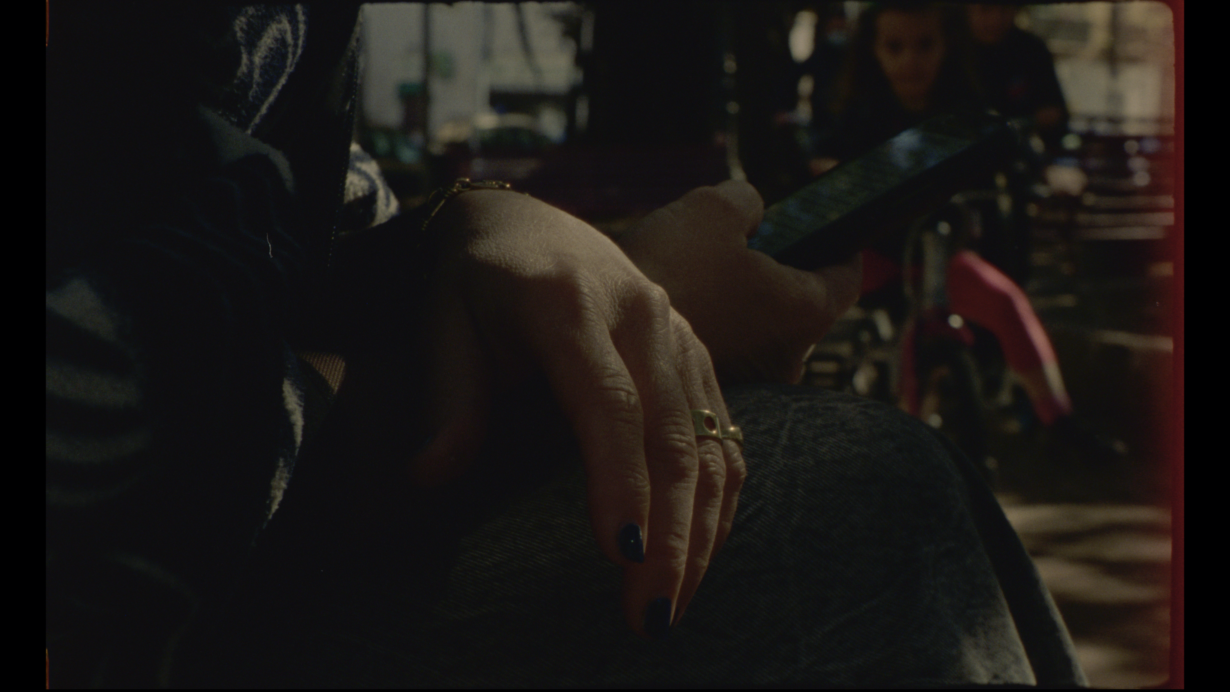The artist’s enigmatic films on show at Ordet, Milan enigmatically refute the binaries between the domestic and the productive
French-British artist and filmmaker Beatrice Gibson borrows the title and ethos of American poet Alice Notley’s ‘Dream Gossip’ column from Scarlet – the magazine Notley edited with partner Douglas Oliver during the early 1990s – for her first solo exhibition in Italy, where Gibson now lives. The column invited writers to submit their dreams for publication, spurred on by Notley’s interest in their potent, productive power. Black walls and an absence of lighting, other than what is provided by the video projections, create a dream-room in the gallery, its contours lost in the darkness. Commanding much of the largest space is Dreaming Alcestis (2022), Gibson’s newest work here and the most explicit articulation of Notley’s theme.
The video is back-projected through an otherwise-transparent ‘Hologauze’ screen, which creates an ethereal visual effect. The work’s pared-back colour images of Gibson and codirector Nick Gordon asleep, of their children playing with a pet snake and of their domestic space are conventionally visible, but are also cast, enlarged, onto the floor, the room engulfed by each scene. A layered soundscape of voices, drums and a motorbike engine, symphonic and loud, is equally consuming. As Gibson sleeps, her voiceover adds detail to what is seen and heard. She calls out to Alcestis, the Ancient Greek princess who sacrificed herself for her husband and who appears as a figure in the dream leading Gibson into the underworld on a Ducati. Formally, Gibson attempts to construct an experience of a dream through sound and images that flutter through the gauze like the motion of eyes during REM sleep. Thematically, Alcestis’s sacrifice is positioned as an act of giving and journeying much like Gibson and Gordon’s experience of bringing their family to a new country.

Elsewhere, Gibson’s Deux Soeurs Qui Ne Sont Pas Soeurs (2019) and Dear Barbara, Bette and Nina (2020) play on separate screens. The latter is a particular highlight, a short work consisting of a simple shot of resting hands as Gibson narrates a letter to important figures in feminist film culture (Barbara Loden, Bette Gordon and Nina Menkes), eloquently expressing kinship and inheritance through art. Deux Soeurs… explores similar ideas around solidarity in womanhood, but its more opaque associations between kitsch images – poodles traversing a city, a crying beauty queen, car thieves – are a more challenging experience than Dreaming Alcestis, the dreamlike looseness of which is more absorbing.

Such a looseness brings its difficulties, and as a standalone work Dreaming Alcestis initially feels somewhat impenetrable. In conversation with the other films on display and the legacy of Notley’s work, however, it breaks free from the constraints of legibility or narrative to evoke Gibson’s interest in refuting the binaries between the domestic and the productive. The gallery dreamworld becomes an inviting space for questions of creativity, individuality and one’s position in a collective lineage to be explored.
Dream Gossip at Ordet, Milan, through 15 February
